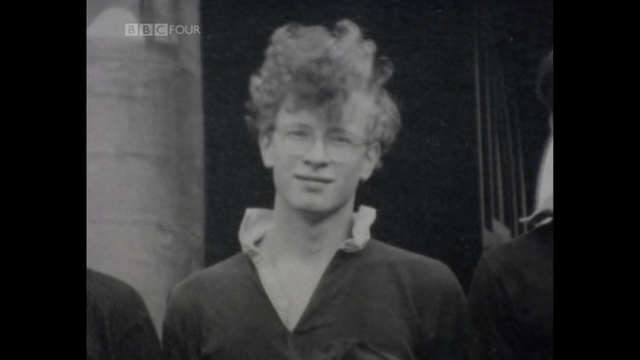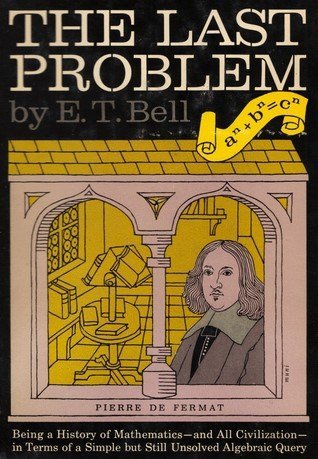The Last problem.
Pierre de Ferma, a French mathematician and a lawyer, he always like to read a Latin translation of his favorite book: "Arithmetica", the original book dates back to the third century AD, written by a Greek mathematician called Diofantus.
As usual, Fermat wrote his notes and thoughts on the margins of the books he read, next to a book problem, which deals with how to divide a square number into two squares, he wrote the following comment:
It is impossible to divide a number cube into two cubes, divide a raised number of 4 into two numbers that are added to the same space, or generally divide an up-to-number number for any number greater than 2 to the sum of two numbers added to the same space. I have discovered miraculous evidence of this, but this margin is too narrow to accommodate.
It took 30 years before someone else read that paragraph. This was after the death of Ferma, when his son printed a new copy of the book within which the margins written by his father.
The problem :
On his way back from school (in 1963), Andrew Wiles decided to go visiting the local library before returning home, because he wasn't looking for a particular book, he went to explore some of the new sections that he didn't usually go to. In the mathematics section, he was attracted by a small book called "The Last problem."
The book speaks about the mathematical theorem so simple that a child like him at 10 didn't find it difficult to understand, theorem says that it can't find any solutions to the equation x ^n + y^ n = p^ n belong to the group of integers (1, 2, 3, 4, ... etc.) If the exponent n> 2. (Note that in the case of n> 2 we get on the Pythagorean equation known as x^ 2 + y^ 2 = p ^2 ).
Despite its simplicity, the theoretician bore a dramatic name: "The Last Fermat theorem".
The part that talks about the history of the theoretician explain why, there is a seventeenth-century mathematician called Pierre de Ferma without most of his mathematical ideas without proof on the margins of a book. After his son published it after his death, mathematicians began to prove these ideas one by one. All ideas have been completed except for one, which became known as the "Fermat's last theorem" for this reason.
Although it revolves around a very simple idea, although Fermat said he has proof, no one in 300 years has been able to reach this proof. All these circumstances created an exceptional status in the history of mathematics.
By reading these words, the proofreader had already worn the child. Stop thinking about everything, except for one thing: it will be the first to arrive.
researcher :

Andrew's attempts to reach proof have not stopped since he read about him until he earned his bachelor's degree in mathematics.
It was clear that all the mathematical methods at that time were still impotent, and the passing of centuries without access to anything gave a general impression in the sports community that it is impossible to reach this proof from the ground. For this reason, when Andrew enrolled at Cambridge University as a research student, his mentor advised him to put his childhood dream aside and work on something more common in the math community. Reluctantly, Andrew listened to a supervisor's advice and began working on a completely different subject, "Elliptical Curves".
What seemed to give up the dream was really a step towards it. When Andrew decided to work on the elliptical curves, he didn't know that on the other side of the world there was a relationship forming between the elliptical curves and Fermat's final theorem.
Relation :
In 1949 Shimura Guru enrolled at the University of Tokyo to study mathematics. Four years have passed since the end of World War II, in which Japan suffered a major defeat, and for that reason its effects are still clear. Teachers are always tired, and the lectures are boring and uninspiring, so students have to rely on each other for motivation and inspiration.
At that time, Shimura knew Tanayama Yutaka, a brilliant mathematician three years older than him, and the personal and scientific relationship between them grew stronger.
Shimura and Tanyama's field of work was the complex mathematics of stereotypical functions (or stereotypes), analytical functions that met an abnormal number of conditions of internal symmetry.
At an international mathematics conference in 1955, Taniama presented three mathematical issues that paved the way for a result that shook the math community at that time and became known as the "Tanyama-Shimura Intuition": each elliptical curve is in fact a function.
For the non-specialist, this means that instead of having two completely separate the world of elliptical curves and the world of stereotypical functions-we suddenly discovered a bridge connecting them. In fact, it isn't just a bridge, it is a dictionary to translate ideas, theories and questions in one to ideas, theories and questions in the other.
Tanyama-Shimura's intuition became increasingly important over time, especially after it became the basis for many other mathematical theories, and hence its proof became of great importance in itself. (Note that "intuitiveness" means a mathematical conclusion or observation that hasn't yet been validated or corrected in a detailed mathematical form, and intuition becomes a theorem when it is done.)
But where is Fermat's last theorem of all this?
the Nexus :
Although the math community believed that it was impossible to prove Fermat's last theorem, the belief was that it was true. Only one person thought of the opposite in 1985, the German mathematician Gerry Fry.
What if Ferma was wrong? What if there was already a solution to the Ferma equation, what would it look like?
Fry did an imaginary solution of the equation according to this assumption, and the resulting solution was an elliptical curve with peculiar characteristics. This elliptical curve appeared to be non-typical, which contradicts Shimura-Taniama's intuition, which states that all elliptic curves are typical.
What this means is if the recent Ferma theorem is incorrect, the semantics of Shimura-Tanaima are also incorrect. Or, conversely, if Shimura-Tanyama's intuition is proved to be correct, this is implicit proof that Fermat's recent theorem is correct. The Association was finally born!
But there was one problem.
Fry didn't prove that the elliptic curve resulting from solving the equation was not typical, he just assumed it. Until this hypothesis, which has become known as "Epsilon Intuition", is confirmed, the association will not be confirmed.
isolation :
On one day in 1986, Andrew Wills sipped tea at a friend's house, when the latter mentioned in the middle of his speech "By the way, have you heard that the intuitive Epsilon has been proven?"
"It's like I was shocked by an electric shock," Andrew says of the moment. At this moment he have learned that the course of his life will change, because all he have to do to prove Fermat's recent theorem is to prove the intuition of Shimura-Taniama. "
It isn't the easy task at all. In fact, the view of the mathematicians at the time of Shimura-Tanaima's intuition was identical to their view of Ferma's recent assertion: it is impossible to prove it.
But that didn't mean anything to Andrew. From the moment he heard about the bond, he left all his research and devoted himself entirely to the fulfillment of his childhood dream. In order to cut off all sources of dispersion and to achieve a situation of "indivisible concentration," Andrew worked alone and for seven consecutive years.
Imagine that you want to go to a city that you know only the name, and there is no one on earth who can tell you where, not only that, but there is no way to confirm the existence of the city originally. Despite all this, you carry your bags and leave alone looking for them for seven years. Imagine that you walked in a way for five years and ended up hitting a wall you could not get past, but you didn't despair, but went back to zero again to look for another route.
This is the closest analogy to what happened with Andrew during that period.
The moment :

Some rumors began to spread during the 1993 Cambridge Mathematical Conference. People were talking about a series of three lectures entitled "Elliptic curves and stereotypes" to be given by a mathematician named Andrew Wiles, who gave no further details of their content. Some of them went to him to ask him, and his answer was one in all cases: smile, then "Come to the lecture to know yourself."
Andrew looked natural during the explanation, and his discussions in the first lectures were about a familiar subject, but for some reason the atmosphere was charged around him. There was that feeling that something would happen. As the last lecture drew to a close, tension was increasing every minute.
Then came the moment.
Full silence except for scribbling chalk on the blackboard. Andrew writes the text of the last Ferma theorem, then speaks a few words ending the lecture. "And so I have proved this, and I think I will stop here."
Then the hall explodes with applause.
The other problem :
Andrew Wiles turned into a star between day and night. Everyone is talking about the mathematicians who came to the impossible, the athlete who succeeded in the failure each of him for three and a half centuries.
But at that time there was a problem.
As is the case with most other scientific societies, until a scientific work is finally accepted and published in a recognized scientific journal after undergoing a process called peer review (that scientists in the same field review scientific work to make sure it is correct), during that process, there was an error in Andrew's proof, this was in September 1993.
Andrew spent the autumn trying to fix this error without getting anything. Unlike previous years in which he worked alone and without pressure, he is now under enormous pressure. The media speaks of its genius day and night, and it doesn't know yet that it has an error that may destroy everything it has done.
Andrew used one of his former students to help him, Richard Taylor, but without interest.
Revelation :
On 19 September 1994, after a year of failed attempts, Andrew was about to surrender.
Andrew decided to look at the matter for the last time until he stabilized himself as he had already done everything he could. As he looked at the scattered papers on his desk, without any introductions, that revelation came down on him.
The problem that prevented him from completing the proof in his current style was the same step he lacked to complete the proof in the way he left him three years ago (after working for five years) because he didn't know how to complete it.
Andrew says he was in a state of disbelief, so he went out of his office for 20 minutes and then came back. Yes, the proof still exists on his desk. he arrived.
By 11:00 the following day Andrew had completed the proof, and this time he was finally accepted. This time, Andrew officially entered history.
Conclusion :
It took 31 years for the little boy to get what he wanted, but he arrived. The lessons from this story are more than one paragraph, so I'll leave it to you.
As the article begins with Andrew's 10-year-old dream, I will end the article with Andrew's 40-year-old words:
"I have given this very rare gift. I have been able to continue to pursue the childhood dream of an adult. I know it is a rare gift, but if the individual can do it, from anything I can imagine. "

